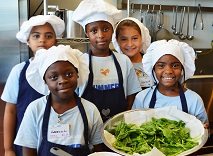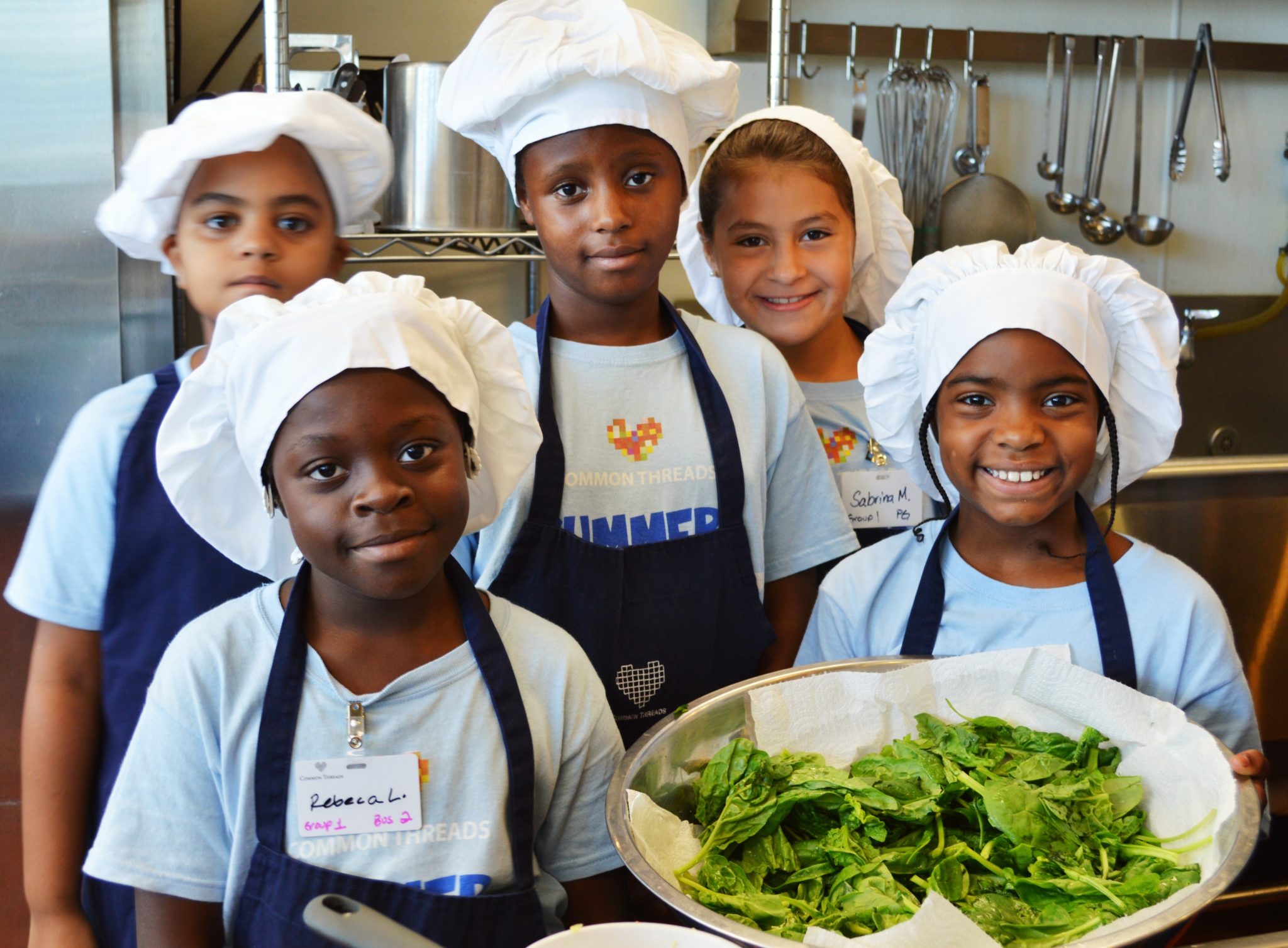Prevent Kids From Sliding Over the Summer

By: Linda Novick O’Keefe
Summertime is here and it’s time to start planning! While summer programs are essential to the safety and well-being of all children, they are especially important for children of low-income families. When school is out, many of these children lose access to educational opportunities and basic needs, such as healthy meals and adequate adult supervision. In order to be successful in school and in life, children need ongoing opportunities to learn and practice essential life skills. As a partner of the Together Counts™ nationwide program that inspires active and healthy living, Common Threads knows this is especially true during the summer months. Students in need can thrive in the summer if programs are made available to give them the chance to eat, learn and play in a healthy environment during a time when hunger often peaks.
Research shows that children living in underserved communities are more likely to face struggles related to obesity and health complications than those in higher-income neighborhoods (Townsend & Melgar-Quinonez, 2003). A report released in June 2015 by the Food Research and Action Center (FRAC) states that 21 million students participate in free and reduced lunch programs during the school year; but of those students only 3.2 million, or 18%, participate in summer nutrition programs. There are many factors to blame for this disparity. According to FRAC, factors contributing to the gap include 1) reduced access to fresh, healthy, high quality and affordable foods nearby; 2) fewer opportunities for physical activity; 3) cycles of food deprivation and overeating; 4) high stress levels; and ) more limited access to health care.
Studies prove that students lose academic ground over the summer; an average of up to two months in math, and students in low-income neighborhoods lose the same amount of progress in reading achievement (Cooper, 1996). This is due to lack of engaging educational activities over the summer and achievement gaps are greater among youth in lower-income (Alexander et al, 2007).
According to the FRAC report, “Recognizing the importance of the Summer Nutrition Programs, in 2013 the U.S. Department of Agriculture (USDA) prioritized increasing participation in them and has continued to provide the leadership necessary to expand program access. USDA set an ambitious goal to provide 10 million more summer meals in 2014 than in 2013.” There are other organizations working to combat the “summer slide” as well. Our partner, the Healthy Weight Commitment Foundation, has various resources available online at TogetherCounts.com that can help students learn the importance of energy balance and more healthy living tips. Additionally, the National Summer Learning Association; libraries and local bookstores; and the Summer Food Service Program, a program working to ensure that low-income children have access to nutritious meals during the summer, offer various solutions.
This summer, Common Threads is partnering with schools and other nonprofit organizations offering hands-on nutrition education to reach more than 24,000 kids. Evaluation of our past summer programs revealed statistically significant improvements in numerous short-term outcome measures. In the area of nutrition, participants demonstrated significant increases in nutrition knowledge; willingness to try new foods; preferences for eating fruits and vegetables; and more. Students also reported engaging in less screen time and more physical activity, and ate more fruits and vegetables.
As a parent, these results have made me think about what I want in a camp or other summer program for my own kids. Top programs maintain a healthy energy balance, feature sports or physical activities, games, enriching discussions, and a fun, stimulating environment. These camps integrate academic components so that students can practice essential skills and keep their brains engaged. They also provide children with a summer experience designed to develop their talents and expand their horizons.
Summertime can be a difficult time for students, especially those in underserved communities. Search for opportunities in your area, try to arrange enriching summer experiences, talk to school administrators, community leaders, librarians, and seek out online resources. We have the power to prevent this negative trend for our own kids, the children in our greater community and those across the nation.
Alexander, K. Entwisle,D., and Olson, L. (2007). Lasting consequences of the summer learning gap. American Sociological Review, 72, 167-180.
Cooper, H., Charlton, K., Valentine, J. C., & Muhlenbruck, L. (2000). Making the most of summer school. A meta-analytic and narrative review. Monographs of the Society for Research in Child Development, 65 (1, Serial No. 260), 1-118.
Townsend, M. & Melgar-Quinonez, H. (2003). Hunger, food insecurity, and child obesity. Food Assistance and Nutrition Research Report, 38. Washington, DC: U.S. Department of Agriculture, Economic Research Service.
For more ideas for getting active in the summertime, check out these other bright ideas from Together Counts!

